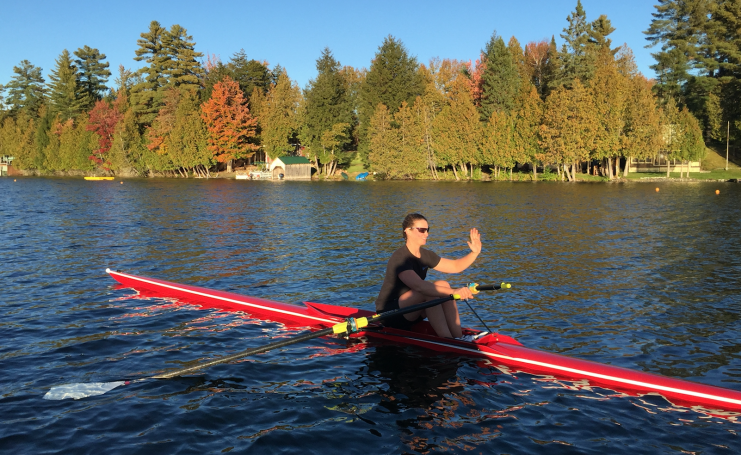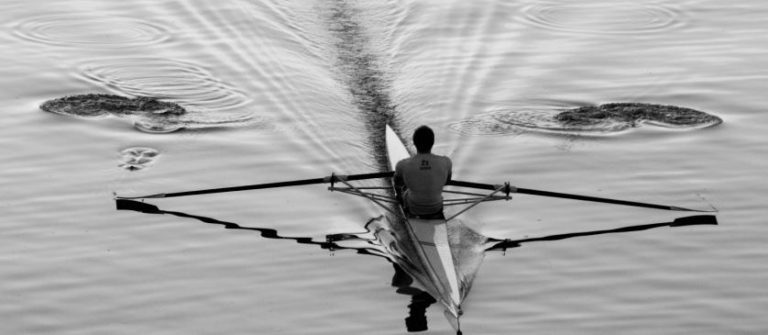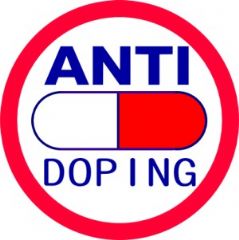A guest post by Troy Howell of Craftsbury Sculling Center.
We spend a lot of time speaking about and explaining our sport in terms that are frankly mechanical. Physics, rigging, and numbers tend to predominate, particularly in the coaching launch. It is easy to get the impression that if we could just get a big enough engine and a precise enough series of lever arms, all problems would disappear. And yet we know better – it wasn’t such things that brought most of us to the sport; it was more visceral things – things that are felt rather than measured. Secretariat never knew what his furlong splits were, he just enjoyed running fast and getting there first. Asking a rower or sculler what is enjoyable about rowing or sculling is rather akin to asking people what they like about kissing. Both are comparatively simple, repetitive motions, the fundamentals of which are easy to learn but require extraordinary sensitivity to master. And it is that sort of sensitivity that is too often glossed over as we go about the business of making boats go fast by becoming ever fitter, stronger, and more mechanically skilled while paying entirely too little attention to the truly subtle aspects of the activity. In short, we fail to give adequate attention to the idea that it is possible to deliberately go about training our nervous systems to attain an ever higher degree of mastery of our allegedly tippy environment in order to row or scull as well as we aspire to do in our mind’s eye or our most lucid dreams of boatspeed. The aim of this brief and modest book, then, is to propose how we might go about undertaking to make the training of the nervous system an integral part of what we do as rowers and scullers. If you’ve been around the sport for any length of time, you’ll recognize some or perhaps even most of the drills described here. What I hope is both helpful and somewhat unexpected is the central point of the approach itself: the idea that refining, re-teaching, and deliberately training the nervous system in a systematic and progressive way is a frontier that can and should be explored, and that greater Comfort in the Boat will indeed make better scullers of us all.
Introduction:
As much lip service and ink as we devote to the Wind in the Willows quotation about “messing about in boats,” most rowers and scullers do far too little of it; we are far too busy getting on with the serious business of training our physiological capacity. Most of us move far too humorlessly from workout to workout (I was guilty of it for years and years and am not rid of it yet) and pay far too little attention to what brought us to the sport in the first place – that although it is definitively not a game, it bloody well IS fun, all the time, as long as we remember to let it be.
What follows is a modest accounting of a mildly organized and codified set of practices for achieving greater things in rowing and sculling through pursuing genuine comfort and ease in the boat. Rowing and sculling are cumulatively fatiguing, not immediately fatiguing, and if an individual stroke feels like hard work, you’re doing it rather poorly.
“Comfort in the Boat” is the name that we arrived at for this group of drills and exercises, and it has its origin in an offhand remark made by my colleague at Craftsbury and Trinity College (Hartford CT, U.S.) Head Coach Kevin MacDermott during a talk around 2010. Sitting easily in his single, he gestured broadly around himself, indicating oars and cockpit, and said “you’ve gotta own this space.” I remember it vividly, and it immediately got me wondering whether there’s a faster way to attain high levels of mastery of the skills of sculling and rowing thanthe traditional method of simply hoping that comfort will come about naturally through many years and tens of thousands of miles of training and imitating the habits of better scullers. At Craftsbury, we believe there is, and over the past five years, Comfort in the Boat sessions have become a key part of our weekly curriculum. It has been field tested extensively both in our sculling camps and by our resident U23 Small Boat Training Center and Green Racing Project senior athletes. Enjoy it as often as you like – that’s largely what it’s for, and if it alters your rowing and sculling in a positive direction, as it has for many of us, please let us know.


Special thanks to Kevin MacDermott for the inspirational and original catalyst, to Carol Bower for consistently and repeatedly reminding us that “sculling is fun, all of the time,” to Brian DeRegt for demonstrating that it is possible to play in the boat for most of an entire summer, and finally to Green Racing Project lightweight sculler Sarah Keller for asking “are you serious?!” the first time I asked her to sit at the catch and let go of an oar handle. She did, and soon grinned like a kid, having realized it was possible and not, in fact, inherently dangerous. It was the most memorable and rewarding coaching moment of 2014 for me.
Part I – Comfort in the Sculling Boat
Coaches and athletes alike invest a great deal of time and attention in the training of the musculoskeletal and cardiovascular systems, and justifiably so. You simply aren’t going to find any champion scullers whose VO2 max, anaerobic threshold, and lactate tolerance are just fair to middling compared to those of the general population. If you expect to win boat races, you should also expect to put thousands of miles and hundreds of high-intensity interval workouts under your hull.
But Do We Train the Nervous System?
Too little attention, though, is paid to the best ways to train the nervous system, and it is worth exploring the idea that this is just as vital to one’s success as a sculler. We have all observed that people who sit rigidly in their shells, brimming with anxiety, are rarely effective boat-movers. Their tension prevents the flowing, comfortable, rhythmic motion that is necessary to go fast, much as a beginning swimmer who is uncomfortable in the water merely thrashes about and doesn’t get across the pool very swiftly or gracefully. Likewise, every marksman knows that jerking the trigger rather than squeezing it results in poor accuracy, and every golfer knows that a case of the “yips” spells trouble for posting low scores. Unnecessary tension begets less-than-optimal performance in all physical activities.
Coaches give us the crude instruction to “relax,” but once we achieve some acceptable level of baseline comfort (the absence of white knuckles or trembling, for example), not much more is usually said or done to promote it further. Scullers who feel pressed for time laugh at the idea that they might get more out of spending a few minutes on balance drills than another five-minute piece.
The fact is that the nervous system IS trainable, and that a sculler’s level of comfort in the boat and his feeling of having mastered his environment go a long way toward determining both the outcomes of his races and his enjoyment of the sport. When you can sit at the catch with blades square and feel nearly as comfortable there as you do sitting in front of your television or at your dining room table, you’ve achieved something more valuable than you might suspect, and it will improve your whole stroke cycle. A sculler who is anxious about the front end will usually hurry to get that part of the stroke over with, rushing through the catch and thereby destroying the steady rhythm that she ought to be striving for. And with every stroke she takes, she is habituating her nervous system to be more nervous.
Notes on the Method:
First and most importantly, approach these drills with a sense of anticipating something that will be both challenging and rewarding rather than as a chore. In the group setting in which we introduce these activities at Craftsbury, the different levels of daring present in the group always makes for an environment in which the presence of more blithe-spirited folks tends to gradually encourage the more cautious scullers to try things they might otherwise have initially balked at, and nearly everyone emerges on the other side of the first 45 minute session both surprised and pleased at how much more comfortably they are in the shell. Successfully doing something you didn’t initially think you could do inevitably breeds confidence. If you are working alone, be respectful of your own state of mind while also being a good toddler, open to learning and new experience. Try the drills that seem most do-able first. If a drill goes well for you, try the challenging variants. If it doesn’t, then try another and circle back to it later. Chances are that after one session of playing with this work, you’ll notice an immediate sense of ease in the first full strokes you take afterward. And over the course of a few weeks, you’ll begin to wonder what seemed hard about the ones you were initially reluctant to even attempt.
Above all, take frequent breaks and sit easy for a few seconds or longer between tries – these breaks allow your nervous system to process what it has just done, and you’ll often find that a drill that seemed “impossible” the first time becomes remarkably easier the second time around.
Finally – remember to breathe. Full exhalation and relaxation go hand in hand.







